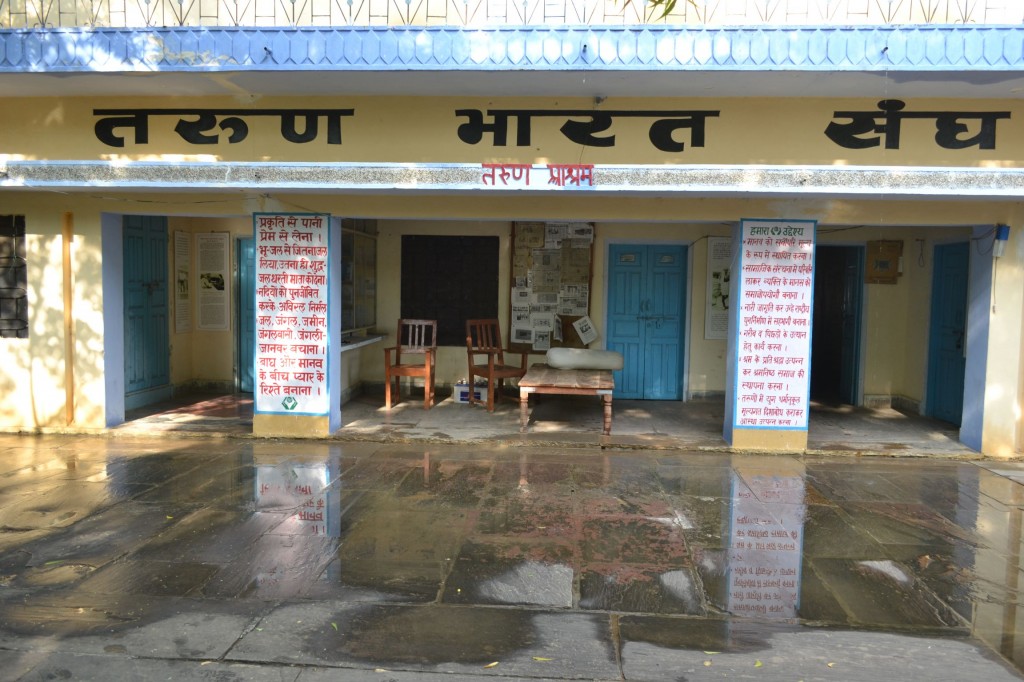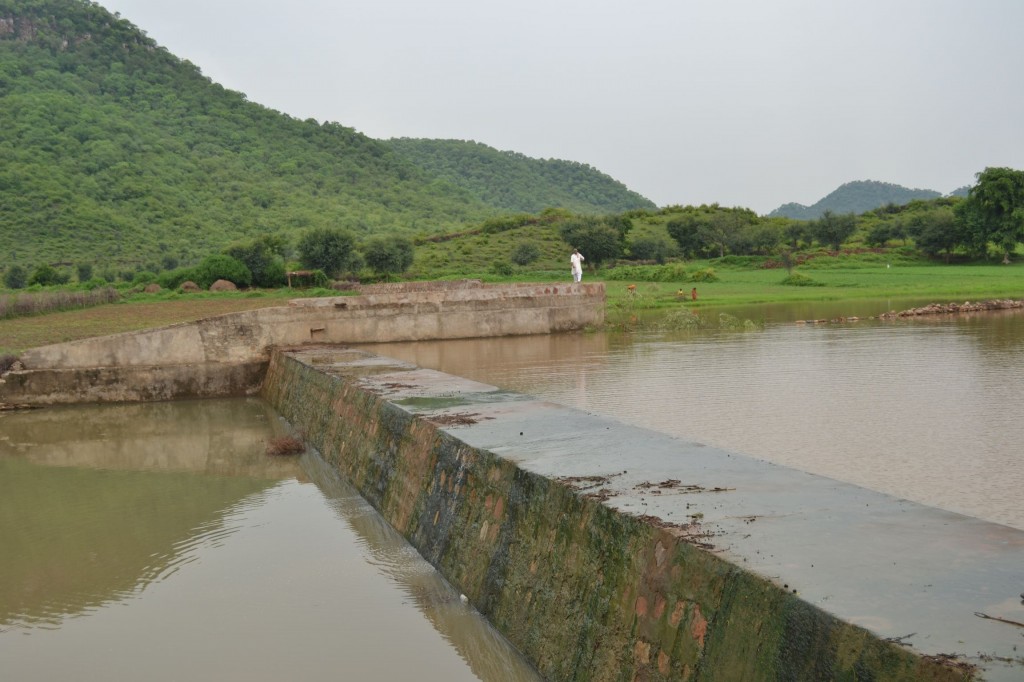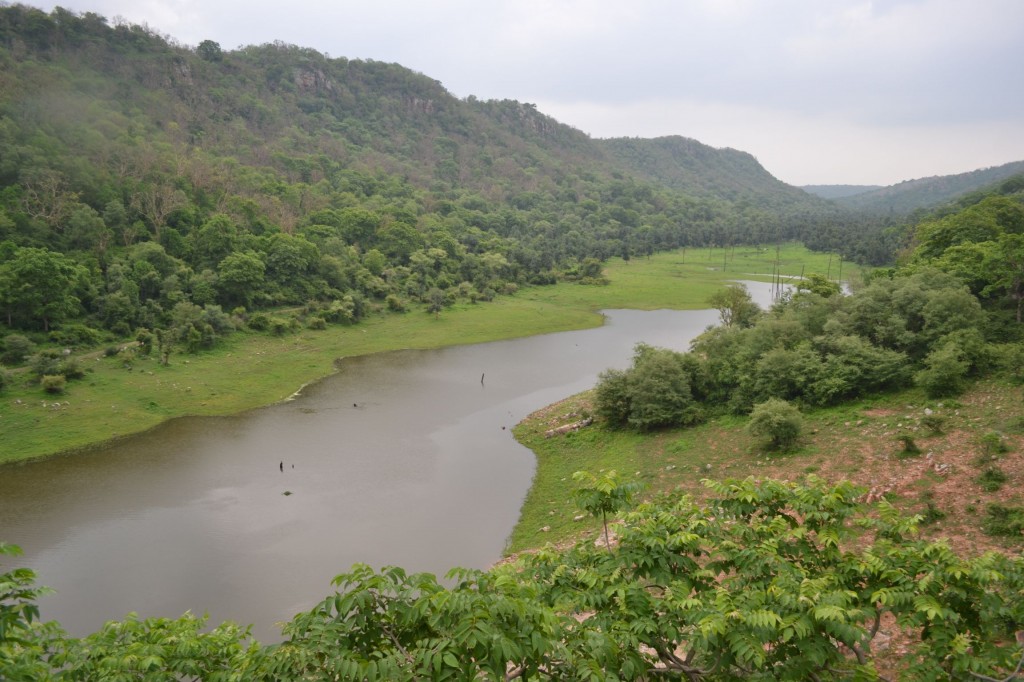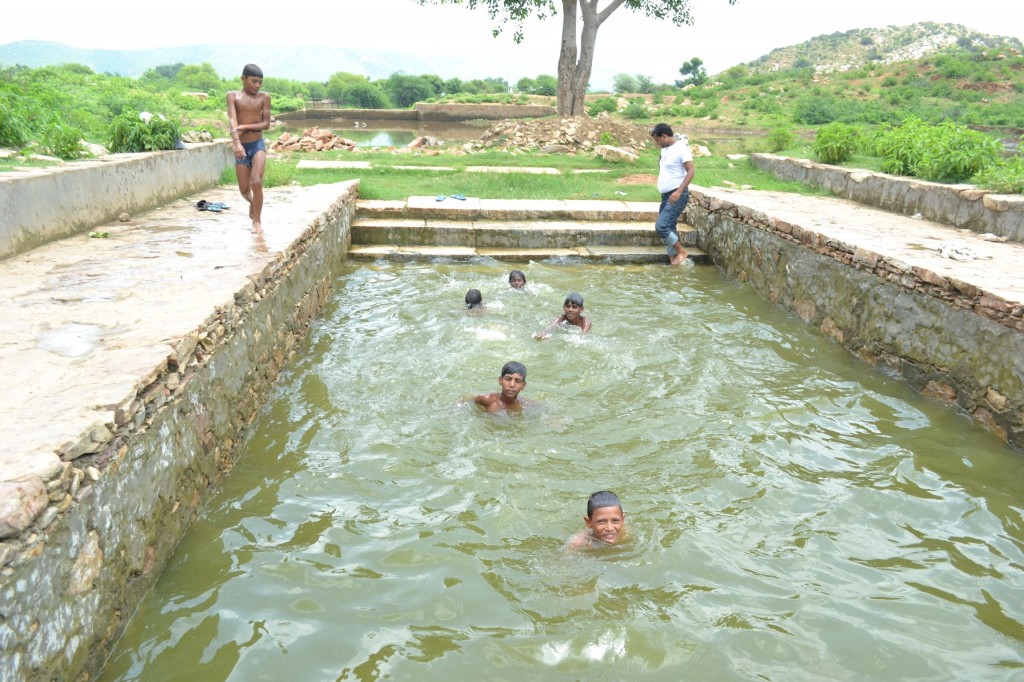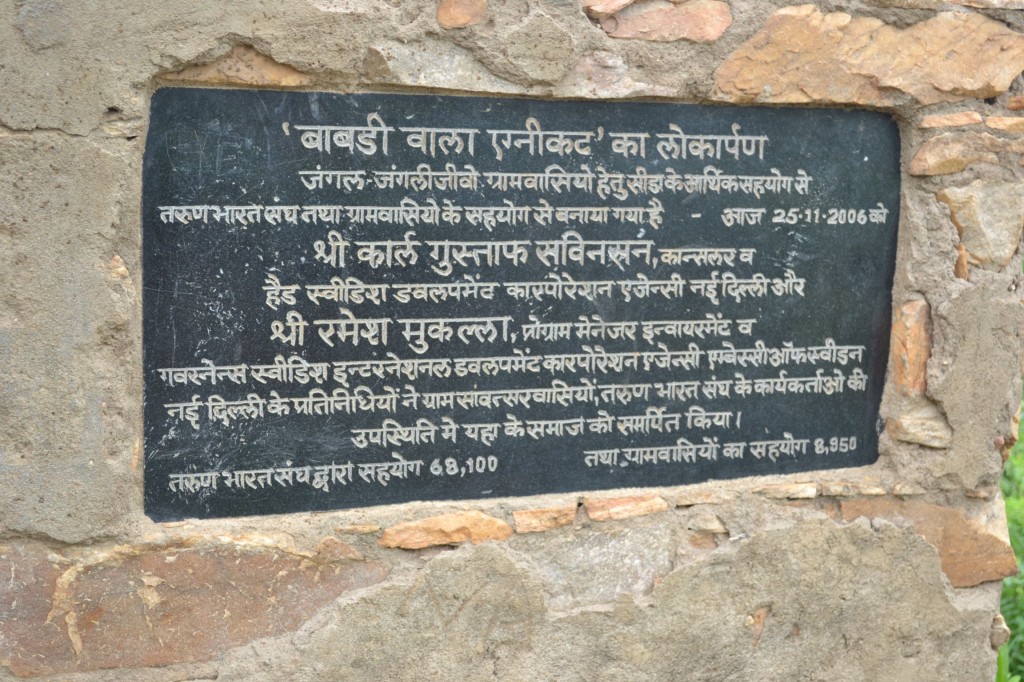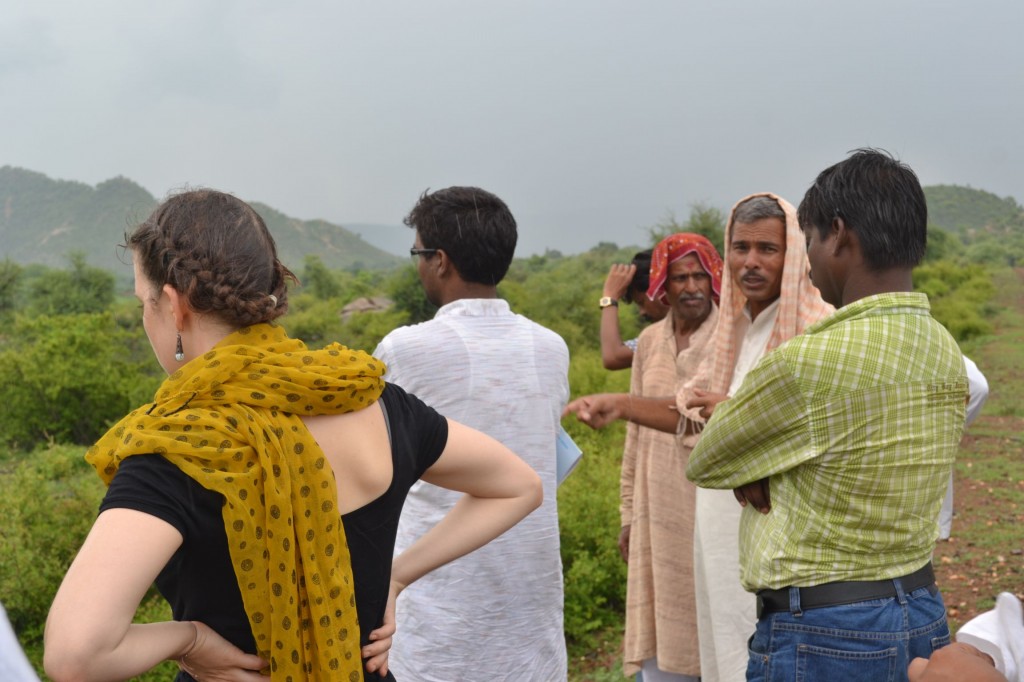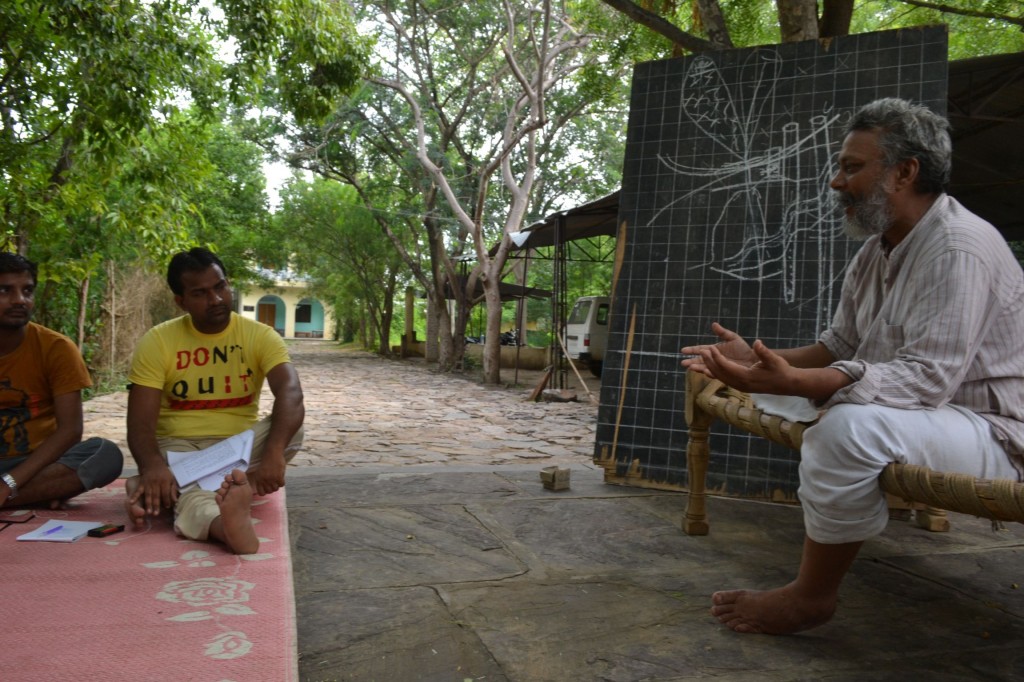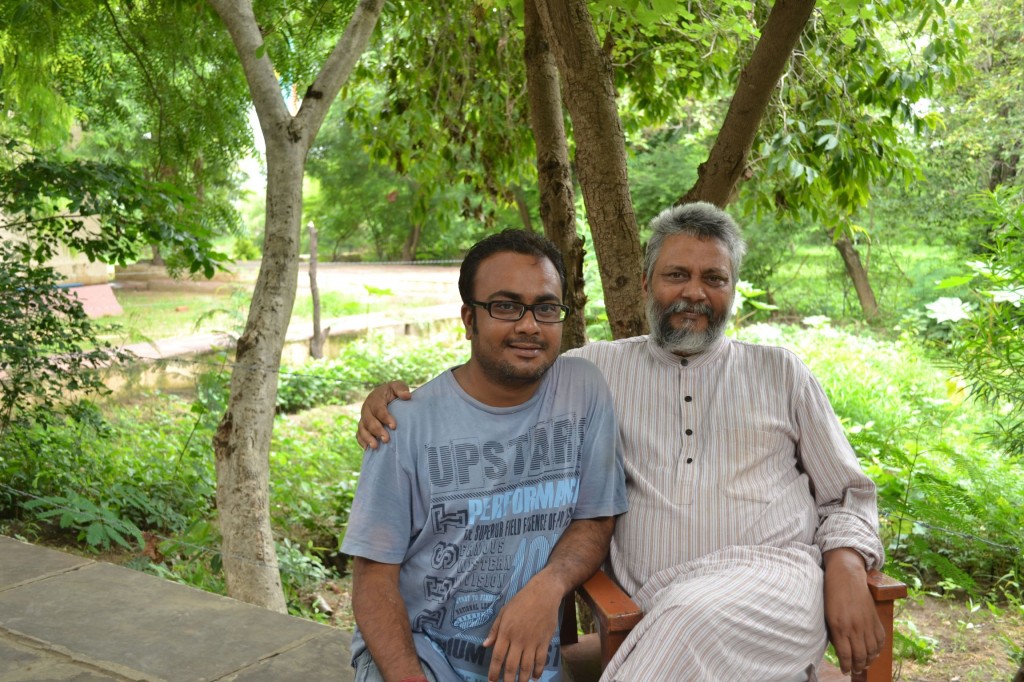Wall Paintings at the TBS Office
I recently had the special opportunity to visit Tarun Bharat Sangh (TBS) and receive training on environmental issues, especially rivers, directly from Mr. Rajendra Singh. He is a member of the Ganga Basin Authority and has also been involved in the Coca-Cola issue in Varanasi. My colleague, Mr. Nandlal Master, who leads the Coke movement in Varanasi, introduced me to him. Mr. Singh was deeply concerned about how the Government of India was handling the Ganga. He strongly advocated for a proper river policy, greater transparency, and active community involvement. I share his belief that communities must be directly involved in nonprofit and environmental projects.
Our Group at a TBS Work Site
Mr. Singh wanted to start a campaign in Varanasi and needed support from local communities and organizations. He asked Mr. Nandlal Master to mobilize people, and Nandlal requested me to organize the boat rower community. Together we arranged two meetings between the boat rowers and Mr. Singh. Seeing our dedication, he invited us to attend a five-day training program at TBS in Alwar, Rajasthan. We formed three groups of five participants each, including boat rowers, my team, and members of Nandlal Master’s NGO.
TBS funded our train travel and provided lodging and food during our stay. On arrival, we were welcomed by Mr. Kanhaiya Lal Gurjar, the General Secretary of TBS, who had been entrusted with our training. Our sessions included both classroom learning and site visits. The first session introduced us to TBS, its work, the local geography, and its people. What fascinated me most was their success in reviving five dead rivers by educating communities about traditional ecological knowledge and sustainable water use.
A Small Dam Called Johad
Mr. Gurjar explained that these rivers had dried up because communities had forgotten their own ecological wisdom and had become dependent solely on government systems. TBS built small dams called Johads to ensure water remained in rivers throughout the year. To instill responsibility, they asked communities to contribute 25 percent of project costs, even though TBS had enough funds to cover everything. This model helped create a sense of ownership and accountability.
This River Has Water All Year
The Johads not only restored rivers but also recharged groundwater. People living far from rivers started finding water in their dried wells again, which strengthened support for TBS. Villagers from distant areas began approaching them to replicate the model. I found this approach inspiring and even used a similar system in the Chance India Program, which worked successfully.
Such Pools Once Dry Are Now Full of Water
Of course, challenges remained. Without accurate maps, TBS first had to conduct extensive surveys of ponds, wells, and canals before deciding where to build dams. With this data, they developed strategic plans. The emphasis on combining traditional knowledge with modern planning was eye-opening.
Community Money is Always Involved in TBS Projects
In ancient times, communities were careful in their water use, adjusting irrigation depending on rainfall. For example, in years of low rain, they reduced water usage from wells. Today, such practices are disappearing, with people even growing water-intensive crops like rice in unsuitable areas. Mr. Gurjar emphasized that education and awareness are essential if we want to prevent misuse of water resources.
Mr. Gurjar Explaining a Site
For three days, Mr. Gurjar took us to project sites. I was amazed to see rivers full of clean water, often in remote areas without roads or human settlements. The sheer dedication of TBS left a lasting impression on me.
Mr. Singh Training Us
Finally, Mr. Singh returned, and we spent two days learning directly from him. His first class on river ecosystems felt like a blessing; I left feeling deeply informed. His second session was about the Ganga and the river policy he had been drafting. He spoke with incredible depth, knowing every tributary of the Ganga and its ecological importance.
Mr. Singh and I
We spent several hours in discussion with him. The draft river policy, developed through suggestions from thousands across India, was comprehensive and inspiring. He patiently answered all our questions. During the training, we also planted over 300 trees together on the TBS campus, which was already full of greenery.
Mr. Singh Training Us
After five days of training, I felt much more informed about river ecology, especially concerning the Ganga. The experience has motivated me to stay involved in this cause, and I would love to work with Mr. Singh and TBS again in the future.



